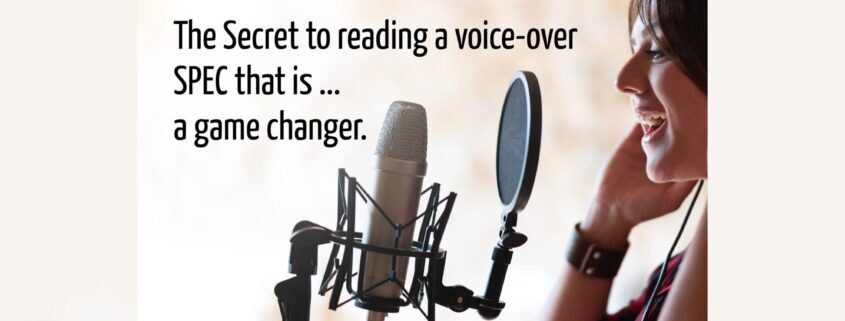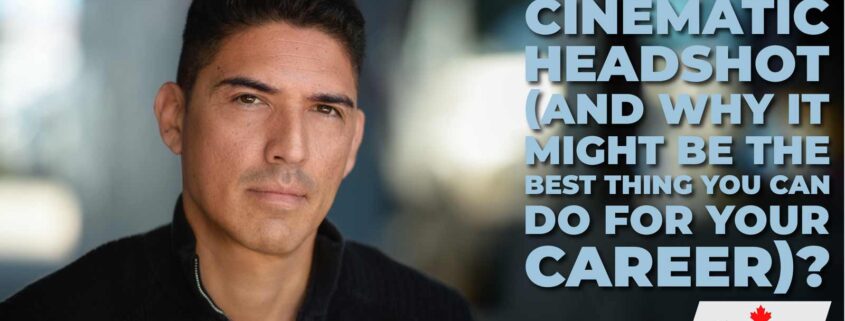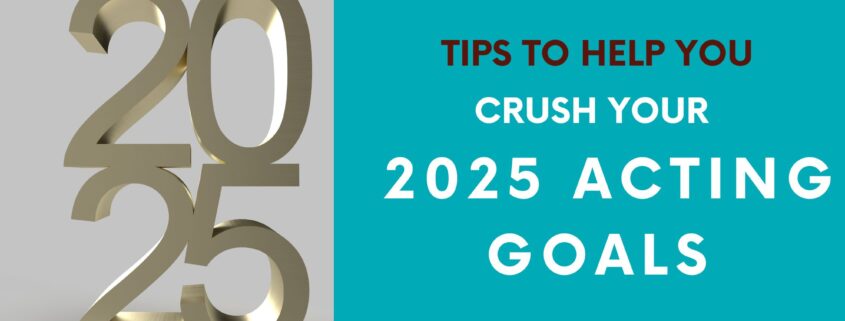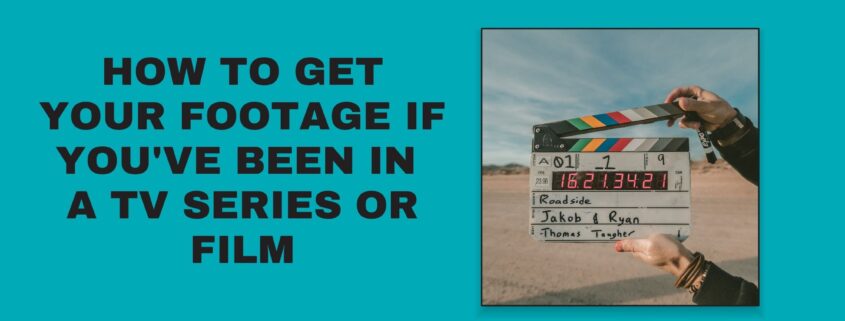There’s a moment—right before a character speaks, right before a decision is made—where something shifts. The breath holds. The eyes change. The energy lands. That moment? That’s where a cinematic headshot lives.
Cinematic headshots aren’t about being dramatic or brooding for the sake of it. They’re about suggesting something deeper: story, character, the possibility of a scene. When done right, they feel like a freeze-frame pulled from the middle of a compelling performance. And for casting? That’s gold.
So how do you get one? And more importantly—how do you prep for it so your headshots don’t just sit on a website but actually get you in the room?
Let’s walk through what makes a headshot cinematic, why it matters in today’s casting world, and what actors can do to prepare.
First Off: What Is a Cinematic Headshot?
“Imagine a still frame pulled from a movie—right before the character says something important.”
That’s a cinematic headshot.
It looks like something’s just happened—or is about to. There’s a story in the shot, even if you’re not sure what it is. The actor looks present, not posed. Alive, not frozen. It’s subtle. Specific. A glimpse into a moment, not a mugshot that simply represents what an actor looks like.
Visually, cinematic headshots often use natural light, shallow depth of field, and medium-to-close framing. The background is soft and abstract—it might be an alley wall, a sliver of urban grating, or a subtle streak of green—but it never distracts. Instead, it supports the mood of the actor in the frame.
Think: texture without clutter. Shadows without gloom. Glimmers of movement, of thought, of stillness that feels earned.
These aren’t “look at the camera and smile” shots. They’re “you’re in the scene, we just paused the movie” shots. You might be listening to an imaginary character. You might be feeling something you’re not saying. Whatever it is, the lens catches it.
That’s the power of cinematic.
It’s what makes a casting director pause in a sea of thumbnail sameness and say, “Whoa. I want to know more about this actor.”
Why They Work (and Where They Work Best)
It’s not just a headshot—it’s a thumbnail, a pitch, a tiny piece of marketing real estate. And it’s got about 40 milliseconds to get noticed.
What makes someone pause?
Connection. Specificity. Humanity.
A cinematic headshot gives all of that. It’s not trying to be everything to everyone—it’s you, in a moment, in a world that feels real. And it helps casting instantly place you in the kinds of stories they’re trying to tell.
Whether it’s the detective on Law & Order, the intern with secrets on FBI: Most Wanted, the offbeat best friend in an Only Murders-style comedy, or the bookstore employee who’s maybe not okay in an indie drama… a cinematic headshot says: “This person belongs in something.”
And casting gets it immediately.
These shots are especially useful for:
TV & Film – Single-cam shows, procedurals, and streaming content
Indie Projects & Dramedy – Anything grounded, quirky, or hyper-specific
Theatre – Especially for contemporary and emotionally intimate work
Commercials – Yep, even these. Today’s commercial world is all mini-movies and branded storytelling. Not just smiles and cereal boxes.
What You Bring to the Shot
As your photographer, I’ve got the camera, the light, the lens, the timing. I’m scouting locations, clocking the clouds, avoiding the wind, watching bounce light, and adjusting shutter speed in real time.
But what makes a cinematic shot work—that’s shared.
Here’s how you can show up ready to create something remarkable.
1. Know Your Type (And Where It Fits)
You don’t need to box yourself in—but it helps to know where you’re already castable.
Are you the no-nonsense principal? The brooding new recruit? The sweet sibling with secrets?
Look at current shows filming in your region. What characters do you honestly look like you could play? And if you don’t know—ask! I help actors figure this out all the time.
Once you know the characters you’re targeting, everything else (wardrobe, expression, vibe) gets easier.
2. Wardrobe That Supports the Story
No costumes. That includes scrubs, lab coats, stethoscopes, fake badges, or anything that says “community theatre prop closet.”
Instead: wardrobe that suggests a character without spelling it out.
Some examples:
Tailored blouse + blazer = attorney, therapist, exec
Clean crew neck + flannel = college kid, indie lead, good guy in over his head
Henley under a field jacket = grounded, working class, “guy who finds the body”
Soft tee + cardigan = caregiver, creative, teacher, neighbor
Tips:
Think waist-up – No one sees your pants. Don’t stress them.
Bring layers – Cardigans, jackets, button-downs over tees = instant versatility
Avoid logos and trendy cuts – They date your shots
Iron your stuff and lint roll it – It sounds basic but trust me, it matters
Color matters – Blacks, grays, jewel tones, earth tones, deep greens, plums, denims. These photograph beautifully and flatter almost every skin tone
3. Presence Over Performance
Here’s the big one.
A cinematic headshot isn’t posed. It’s present.
The actor isn’t “acting” at the camera. They’re thinking, listening, processing. There’s a story happening inside, and the lens catches that flicker of thought.
I always say: Think it, don’t show it. And your face will follow.
That’s what I coach. Subtlety. I’ll guide you through expression, posture, angles, breath. I’ll throw out scene setups and character moments. All you have to do is listen to them. The result is a shot that’s specific, real, grounded… and totally castable.
“If your shot makes someone say, ‘This guy’s got plumber-who-finds-a-body energy,’ or ‘She’s definitely the DA who’s just a little too intense’… you’re doing it right.”
Don’t rehearse poses. Don’t worry about your “good side.”
I’ll help you find your best angles while you act your way through the shot.
Why I Shoot Natural Light (and What I’m Doing on Set)
Natural light offers nuance. Variation. Honesty.
It moves. It changes. It feels alive.
When I’m shooting, some of the things I’m thinking about:
Which focal length flatters your face without distortion
What time of day creates the softest highlights for the location where we’ll be shooting
What aperture gives me the shallowest depth of field while keeping your eyes to your ears tack sharp
How the bounce light and shadows are affecting your jawline and brow
How to frame your background so it feels rich but not distracting
We shoot in real places with real textures and soft shapes that support your casting without getting too literal. I chase clouds and shadows. I dodge traffic. I reposition you three feet to the left because that’s where the light hits just right. I keep my settings adaptive and my shutter responsive, because sometimes the magic is in the milliseconds.
If I shoot in studio, I light it like it’s not.
All that’s to say—on the day, you don’t have to worry about any of this.
That’s my job.
You just have to show up ready to collaborate and play.
Final Thought: It’s Not Precious, But It’s Powerful
Your headshots are not your legacy.
They’re not your magnum opus.
They’re your calling cards.
A great headshot doesn’t need to tell every story. It just needs to tell one believable one.
That’s the job. And when you prep with that goal in mind—and shoot with someone who gets it—you walk away with images that don’t just look great…
They open doors.
Want to Work Together?
If you’re prepping for new headshots and want help figuring out your type, your casting targets, or your wardrobe—we can do that together. I coach my actors before and during the session, and we create shots that look like you in the world where you’re meant to be cast.
I’m Clint. I shoot cinematic headshots in natural light across New York City.
Let’s make something that gets you called in.
ClintonBPhotography.com
@ClintonBPhotography on Instagram
Clinton Brandhagen
Photographer
(202) 297-5481
www.clintonbphotography.com











